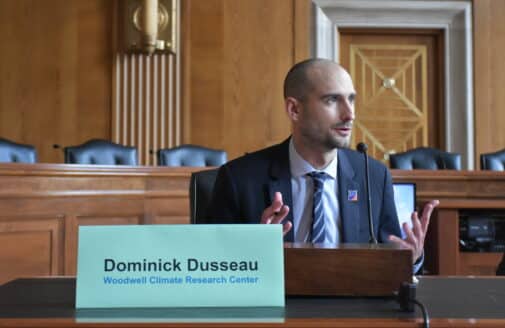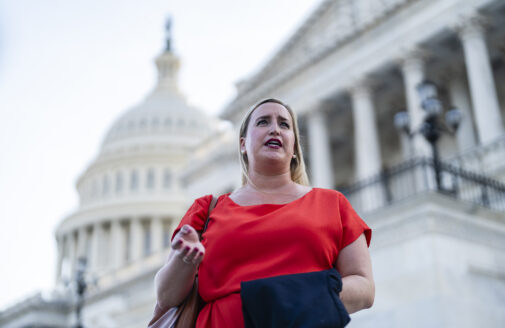Why is the Endangerment Finding so important to protect?
This foundation of U.S. climate policy is under threat from the presidential administration
The White House at dusk.
photo by Matt Wade/Flickr CC BY-SA 2.0
The EPA’s 2009 Endangerment Finding has underpinned almost all U.S. efforts to reduce greenhouse gas emissions, making it a prime target for the Trump administration’s rollback of climate policies. A day-one executive order included a directive to review the “legality and continuing applicability” of the finding. On March 12, the EPA announced that it would potentially rescind the Finding, and the announcement was formalized with a proposed rule on July 29.
Repealing the Finding would undo more than a decade of work that has made American communities healthier, skies clearer of smog and other pollution, and contributed to the country’s decreasing carbon emissions.
What is the Endangerment Finding?
The Endangerment Finding is a pivotal determination by the EPA, issued in response to the 2007 U.S. Supreme Court Case Massachusetts vs. EPA. In that case, the court held that the EPA has the authority to regulate greenhouse gases under the Clean Air Act, and that after it has made a finding of endangerment, the agency cannot refuse to regulate these gases.
Additionally, the EPA found that greenhouse gases in the atmosphere are both a hazard to public health and that motor vehicle emissions contribute to this pollution. In the years since, the EPA has built on the original ruling and issued subsequent endangerment findings relating to aircraft and utility emissions under other provisions of the Clean Air Act .
Why is the Endangerment Finding important?
As a result, the Endangerment Finding has become the legal foundation for essentially all federal regulation of greenhouse gas emissions in the U.S.—including motor vehicle tailpipe emissions and power plant rules.
The EPA’s proposed rule would repeal all greenhouse gas emissions standards for light-duty, medium-duty, and heavy-duty vehicles and engines, and would preempt any state fuel efficiency or vehicle emissions laws or regulations. Furthermore, this repeal could be a foundation for undoing greenhouse gas emissions regulations on stationary sources like power plants or oil and gas facilities.
The Endangerment Finding is based on sound science
The attempt to repeal the Endangerment Finding is emblematic of the current administration’s disregard for scientific consensus around the causes and impacts of climate change.
The original finding draws from expertise at the U.S. Global Change Research Program, the Intergovernmental Panel on Climate Change (IPCC), and the National Academies of Sciences. It examined public health and public welfare in the U.S., with a focus on air quality, food production and agriculture, forestry, water resources, sea level rise and coastal areas, energy, infrastructure, and settlements, and ecosystems and wildlife. The EPA received over 380,000 public comments, the majority of which provided support for the Finding.
In 2018, Dr. Philip Duffy, then-president of Woodwell Climate Research Center, led a review of the scientific foundation of the Endangerment Finding. That work, published in the journal Science, found that “for each of the areas addressed in the EF, the amount, diversity, and sophistication of the evidence has increased markedly, clearly strengthening the case for endangerment. New evidence about the extent, severity, and interconnectedness of impacts detected to date and projected for the future reinforces the case that climate change endangers the health and welfare of current and future generations.”
What’s next for climate policy?
The legal validity of the administration’s proposed rule was contested almost immediately and challenges will likely continue to roll in even if the rule is made official.
The EPA has extended a public comment period on this topic through September 22, 2025. The recently released Department of Energy (DOE) report, A Critical Review of Impacts of Greenhouse Gas Emissions on the U.S. Climate, which challenges scientific consensus by claiming that carbon dioxide-induced warming appears to be less damaging economically than commonly believed, serves as a foundation for the EPA’s proposed rule. That report is also open for public comment through September 2, 2025.
The National Academy of Sciences has fast-tracked its scientific review of the impacts of greenhouse gases on human health in order to inform the decision within the comment period, and has requested contributions from scientists and experts in the fields of public health, extreme weather, climate modeling, agriculture, and infrastructure. Woodwell Climate is contributing to the opportunities for public comment and scientific engagement to aid future consideration of this, and similar, proposals in courts and encourages members of the public to do the same.











